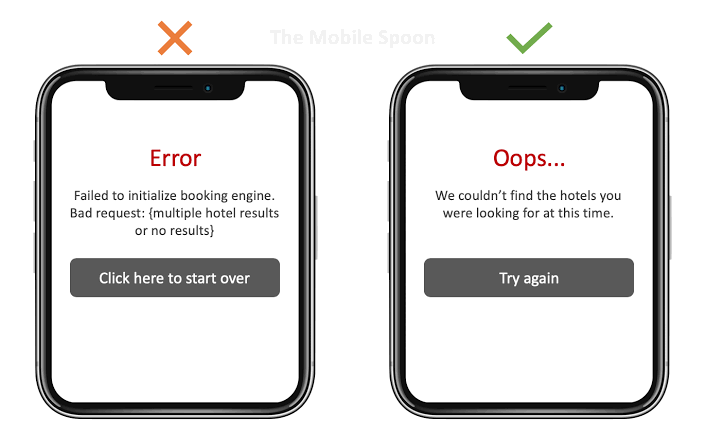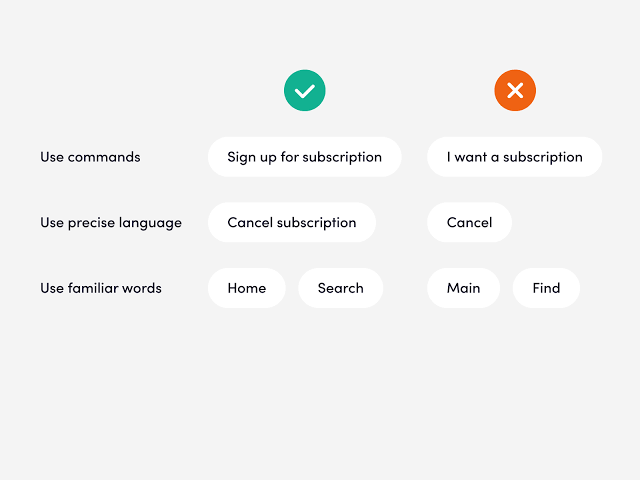User experience (UX) writing has become a vital component in the field of digital design that can greatly impact a product's success. However, what is UX writing exactly, and why is it so crucial?

Recall your most recent phone app usage; it should be an application you use regularly. How much of the text in that app do you remember? Is there any text on buttons? Text in the menu? guidelines? Notifications? It's likely that you will recall a few words, but not many. Even so, the text speaks for the product.
Because product copy is so crucial, there is a position specifically for writing it: UX writer. This article explains what UX writing is and what UX writers actually produce.

The process of creating text for a digital product's interface—which includes websites, mobile apps, and software applications—is known as user experience writing (UX writing). Button, menu, error message, onboarding instructions, and any other text that directs users through their interaction with a product are examples of this type of text, also referred to as microcopy. UX writing prioritizes usability, clarity, and brevity over traditional copywriting, which tries to convince and sell. This way, users can easily navigate and use the product.
The Importance of UX Writing

Improves usability
Users can better grasp what needs to be done and how to do it when UX writing is clear and succinct. This improves the product's general usability by making it more intuitive and user-friendly.
Enhances user satisfaction
By lowering annoyance and confusion, effective UX writing can greatly increase user satisfaction. Users are more likely to enjoy using a product when they can navigate it easily and achieve their goals.
Establishes trust
Users come to trust UX writers who are dependable and consistent. The product's dependability and the designers' consideration of the needs and challenges of the user are demonstrated by its clear instructions and helpful error messages.
Supports branding
UX writing also helps to maintain the tone and voice of the brand. It ensures that the language used throughout the product aligns with the brand’s identity, contributing to a cohesive user experience.
Key principles of UX writing

Clarity
Ensuring clarity is the main objective of UX writing. When a user encounters an error message, they should know what it means right away, and they should also know how to fill out a form. Use plain language and stay away from jargon.
Brevity
Users' attention spans are finite, and digital interfaces are small. Writing for UX that works is succinct and gives the user just enough information without going overboard.
Consistency
It's critical that terminology and language used throughout the product are consistent. This lessens cognitive load and improves usability by assisting users in becoming accustomed to the product's interface.
Empathy
When writing about user experience, one should be sympathetic to the viewpoint and possible annoyances of the user. This entails writing in an approachable and beneficial manner, especially when creating error messages or educational materials.
Action-oriented
One common task of UX writing is to direct users toward particular actions. Action-oriented terminology, like "Save Changes" or "Get Started," makes it easier for users to figure out what to do next.
Best practices for UX writing

Know your audience
Good UX writing requires a thorough understanding of your target audience. Identify their needs, pain points, and preferences by conducting user research. Make sure the words you use have resonance with your audience.
Write for scanning
Rather than carefully reading digital interfaces, users frequently scan them. For easy scanning, use headings, bullet points, and brief paragraphs. Emphasize important details to grab users' attention.
Speak positively
Positive language makes using it more enjoyable. Consider saying "Password must include at least one special character" in place of "Invalid password." This gives the user a remedy in addition to alerting them to the error.
Test and iterate
User feedback should be used to test and iterate UX writing, just like other aspects of UX design. To find any problems with the microcopy and make the necessary corrections to enhance clarity and usability, conduct usability tests.
Work together with developers and designers
UX writing is a team effort. Work closely with developers and designers to make sure the text complements the product's overall functionality and design. The seamless integration of text and visual elements is ensured by this collaboration.
Skills required for UX writing

Writing and editing
UX writers need to have strong writing and editing abilities. This entails having the ability to edit and polish text for optimal impact in addition to having the ability to write clearly, succinctly, and persuasively.
User research
Good UX writing requires an understanding of user needs and behaviors. Proficiency in conducting user research, analyzing data, and deriving insights that guide their writing are essential skills for UX writers.
Empathy
The ability to put oneself in the user's shoes and write from the user's perspective is a critical skill for UX writers. This aids in the creation of content that successfully guides and responds to user concerns.
Collaboration
Product managers, designers, developers, and marketing teams are just a few of the stakeholders that UX writers must work with. Effective collaboration requires strong interpersonal and teamwork abilities.
Attention to detail
When writing UX, accuracy is essential. Paying close attention to details guarantees that the text is precise, coherent, and error-free, which enhances the user experience and makes it appear polished and expert.
Common UX writing elements

Buttons
Among the most prevalent components of a digital interface are buttons. Buttons should have clear, action-oriented text, like "Sign Up" or "Download Now."
Error messages
User-friendly error messages should be unambiguous and instructive, outlining the issue and offering solutions. For instance, state "Page not found" in place of "Error 404." Head back to the homepage or check the URL.
Onboarding instructions
These provide users with guidance during the first introduction or setup of a product. To help users get started as soon as possible, these instructions should be succinct, understandable, and encouraging.
Tooltips and help text
These add-ons offer extra details or direction without taking up space on the main interface. They ought to be succinct and educational, providing succinct advice or justifications.
Form labels and instructions
It is important for form labels and instructions to be clear and simple to comprehend. By assisting users in correctly completing forms, they lower the possibility of mistakes and enhance user satisfaction.
Collaborating across domains to develop products

To create copy that is in line with both the needs of users and the product vision, UX writers work in close collaboration with numerous team members and stakeholders. The following roles are typical for UX writers to work with:
- Designers- responsible for creating the full product user experience.
- Interface designers- place their copy in the product's visual elements, which are created by interface designers.
- Researchers- use techniques like testing, focus groups, surveys, and usage data to better understand the needs of their users.
- Content strategists- manage how the brand's content is used, including the copy for the user experience, to achieve organizational objectives.
- Product managers- in charge of organizing, developing, and releasing the product.
- Marketers and brand experts who could help you with copy intended for public consumption and who could offer microcopy feedback so that marketing and product copy match.
Conclusion
UX writing is an essential part of digital design that helps with branding, trust-building, and usability. UX writers can produce fluid and delightful user experiences by emphasizing clarity, succinctness, consistency, empathy, and action-oriented language. The role of UX writing will only grow in significance as digital products continue to change, making it a necessary competency for any team working on digital design. The success and quality of your digital products can be greatly increased by comprehending and putting into practice good UX writing techniques, regardless of experience level in the industry.


